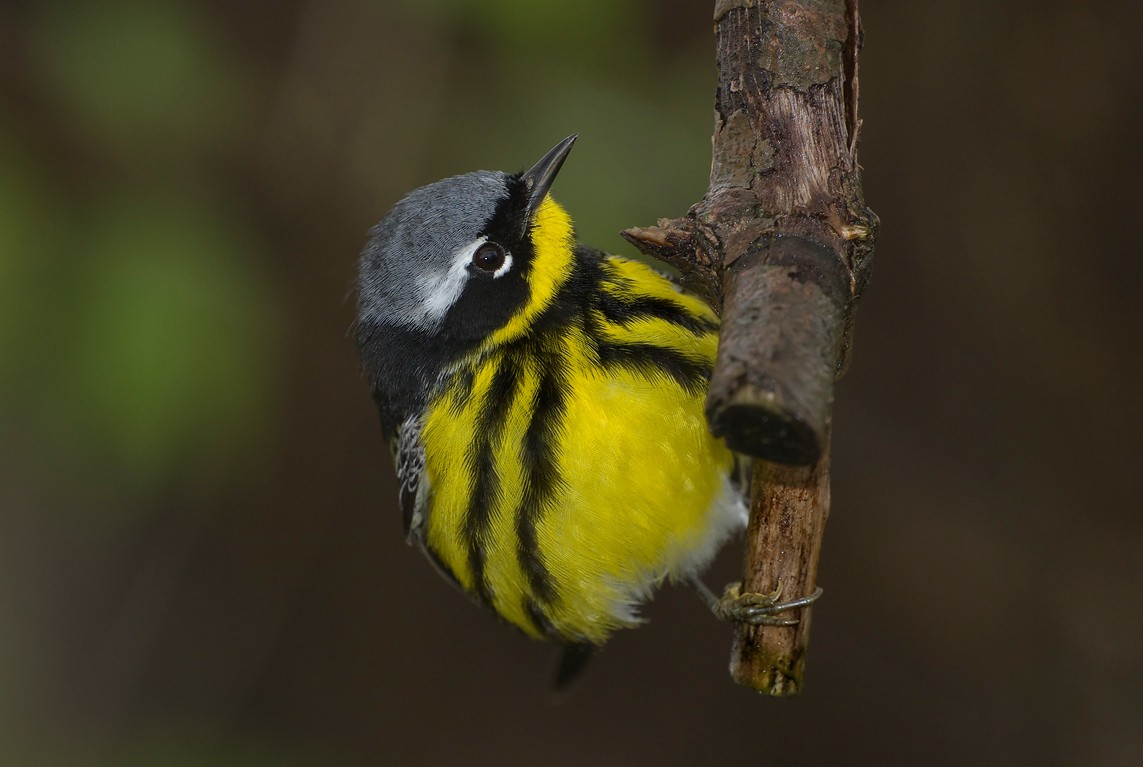Magnolia Warbler
A species of Setophaga Warblers Scientific name : Setophaga magnolia Genus : Setophaga Warblers
Magnolia Warbler, A species of Setophaga Warblers
Botanical name: Setophaga magnolia
Genus: Setophaga Warblers
Content
Description People often ask General Info
 Photo By William H. Majoros , used under CC-BY-SA-3.0 /Cropped and compressed from original
Photo By William H. Majoros , used under CC-BY-SA-3.0 /Cropped and compressed from original Description
The magnolia warbler can be distinguished by its coloration. The breeding males often have white, gray, and black backs with yellow on the sides; yellow and black-striped stomachs; white, gray, and black foreheads and beaks; distinct black tails with white stripes on the underside; and defined white patches on their wings, called wing bars. Breeding females usually have the same type of coloration as the males, except that their colors are much duller. 
Size
13 cm
Life Expectancy
7 years
Nest Placement
Tree
Clutch Size
3 - 5 eggs
Incubation Period
1 - 2 broods
Number of Broods
11 - 13 days
Nestling Period
8 - 10 days
Feeding Habits
Magnolia Warbler predominantly consume caterpillars, with a preference for spruce budworms. Their diet consists of various arthropods, beetles, butterflies, and spiders. They forage on tree branches, favoring mid-level conifers, and include fruit and nectar intake during winter. Magnolia Warbler feed by searching the undersides of foliage.
Habitat
Magnolia Warbler predominantly inhabit boreal forests, thriving in regions populated with dense, young conifers such as spruce in northern areas and preferring hemlock in the southern parts. These birds favor forested environments with specific vegetation types, selecting altitudinal ranges up to 5,000 feet. During migration, magnolia Warbler adapt to different wooded habitats, utilizing forest edges, woodlots, and urban parks. Their wintering grounds are just as varied, extending to agricultural lands like cacao plantations, fruit orchards, as well as forests and shrubby thickets.
Nest Behavior
Both male and female magnolia Warbler are involved in constructing the nest. Eggs are laid within this structure, and both parents partake in caring for the young, though specific patterns of egg-laying and parental roles are not detailed here.
Nest Characteristics
Magnolia Warbler's nest is located in dense conifers on horizontal branches close to the trunk, usually less than 10 feet high. The nest, often perceived as sloppy and flimsy, is woven from grasses, weed stalks, and a foundation of twigs, lined with horsehair fungus.
Dite type
Insectivorous
People often ask
General Info
Feeding Habits
Bird food type
Bird Feeder Type

Small Tube Feeder

Platform
Sounds
Call
Recording location: Mexico
Behavior
Magnolia Warbler exhibit dynamic behaviors primarily centered around their interaction with the habitat of dense young conifer forests. They actively forage by hopping from branch to branch, adept at gleaning insects from the underside of foliage, displaying a preference for the undersides of conifer needles. These birds are diurnal, with males typically vocalizing their melodic songs intensively during the crepuscular hours of dawn and dusk, sometimes even while searching for food. Magnolia Warbler engage in courtship displays that involve showing white tail spots through distinctive tail spreading, reminiscent of the American Redstart. This behavior does double duty, serving both to attract mates and as a territorial warning to potential intruders. On breeding grounds, pairs share territories, which contrasts with their behavior in wintering habitats, where they maintain separate territories. They are known for their adaptability during migration, often integrating into foraging flocks with chickadees, and forming associations with mixed-species flocks in their wintering environments.
Distribution Area
The magnolia warbler is found in the northern parts of some Midwestern states and the very northeastern parts of the US, with states such as Minnesota and Wisconsin comprising its southernmost boundaries. However, it is mostly found across the northern parts of Canada, such as in Saskatchewan, Manitoba, Ontario, and Quebec. During the winter, the warbler migrates through the eastern half of the United States to southern Mexico and Central America. 
Species Status
The magnolia warbler is assessed on the IUCN Red List as least concern for conservation because it is fairly widespread and common within its habitat and not at risk of extinction. Research has shown that a good percentage of warblers die from flying into television towers in their migratory path. Also, parts of their habitat have been degraded as coniferous forests are cleared which causes the number of warblers living in a habitat to decrease, but they certainly are not greatly affected by the deforestation. 
Scientific Classification
Phylum
Chordates Class
Birds Order
Perching birds Family
New world warblers Genus
Setophaga Warblers Species
Magnolia Warbler